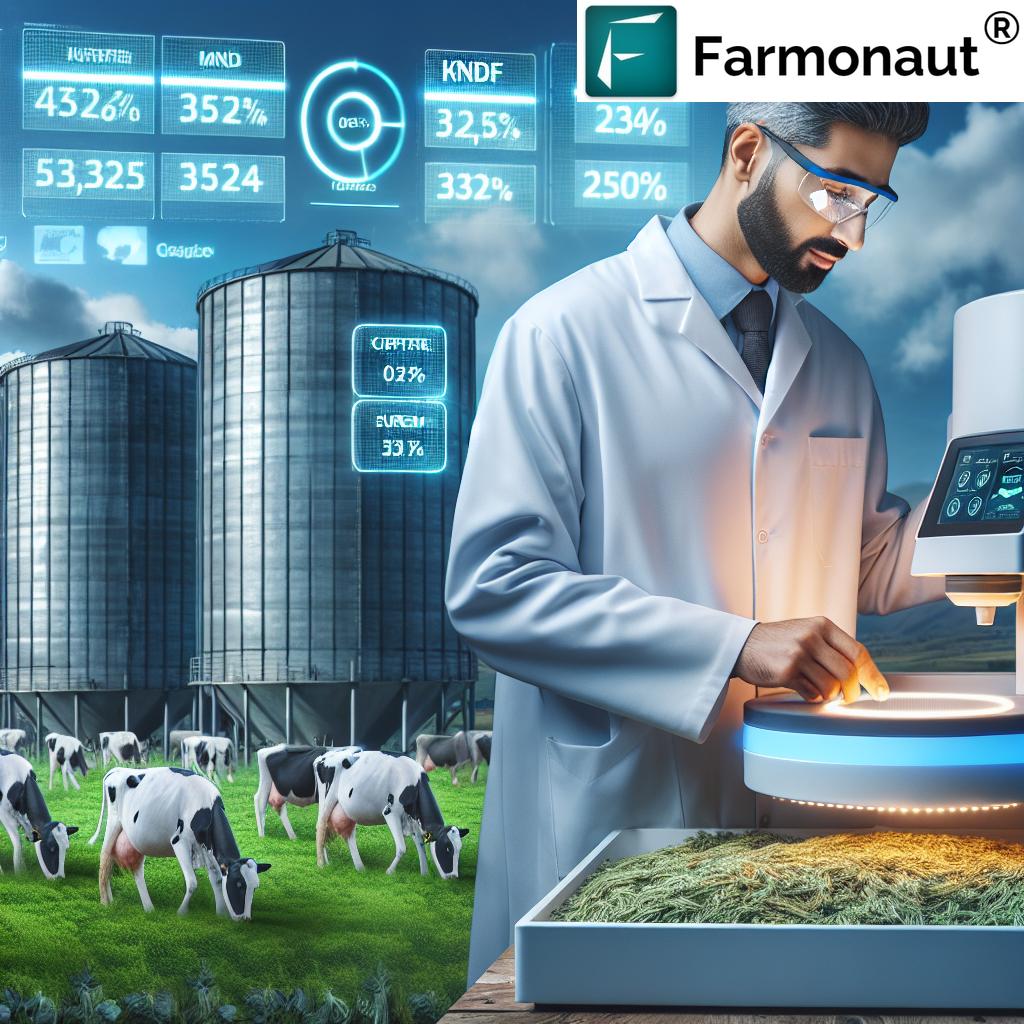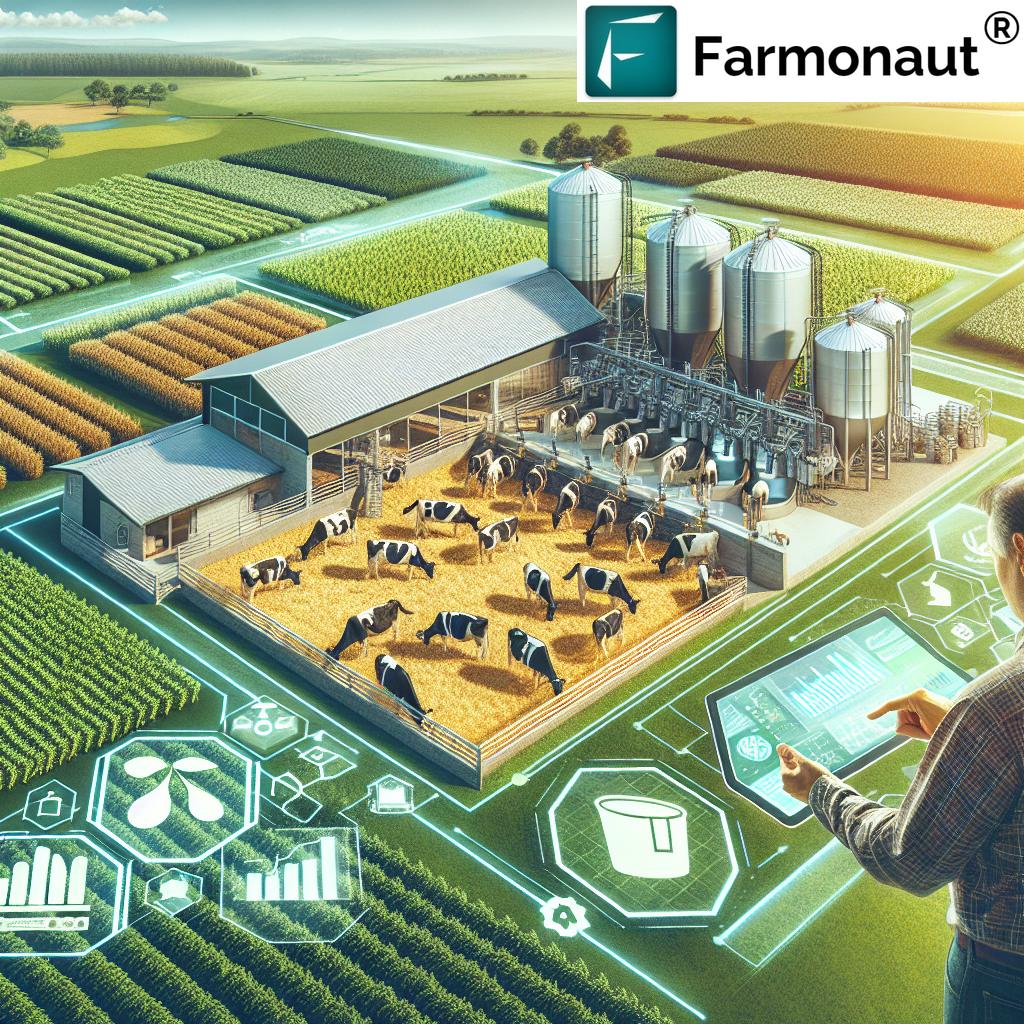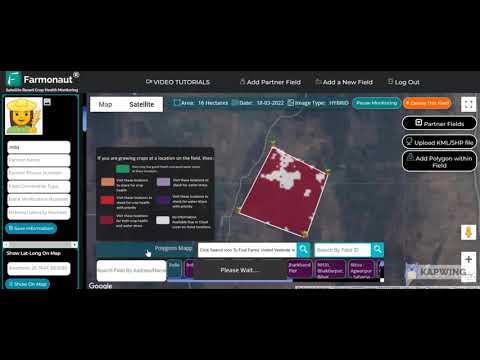Maximizing Dairy Profits: Ohio’s Guide to Advanced Forage Quality Assessment and Nutrient Optimization
“Advanced forage quality metrics like NEL and IVNDFD can increase milk production by up to 15% compared to traditional RFV methods.”
Welcome to our comprehensive guide on maximizing dairy profits through advanced forage quality assessment and nutrient optimization techniques. As we delve into the world of precision agriculture and its impact on dairy farming in Ohio, we’ll explore cutting-edge methods that are revolutionizing the industry. Our focus will be on enhancing feed efficiency, optimizing milk production, and ultimately boosting the economic success of dairy farms across the Buckeye State.
The Evolution of Forage Quality Assessment
In recent years, the dairy industry has witnessed a significant shift in how we evaluate forage quality. Traditional metrics like Relative Feed Value (RFV) and Relative Forage Quality (RFQ) have long been the standard, but today’s progressive dairy farmers and nutritionists are embracing more advanced techniques. These new methods provide a deeper understanding of forage nutrient content and its impact on dairy cattle performance.

Advanced Metrics: Beyond RFV and RFQ
While RFV and RFQ have served the industry well, they have limitations in predicting animal performance accurately. Let’s explore some of the more sophisticated metrics that are gaining traction:
- Net Energy for Lactation (NEL): This metric provides a more precise estimate of the energy available to dairy cows for milk production.
- In vitro NDF digestibility (IVNDFD): IVNDFD offers insights into how efficiently cows can utilize the fiber content in forages.
- Neutral Detergent Fiber (NDF): NDF is crucial for understanding the fiber content and its impact on intake and digestibility.
- Acid Detergent Fiber (ADF): ADF helps in estimating the energy content of forages.
These advanced metrics allow for a more nuanced approach to forage quality assessment, leading to more accurate ration formulation and improved milk production.
The Economic Value of High-Quality Forages
Understanding the economic impact of forage quality is crucial for dairy farm profitability. High-quality forages can significantly reduce the need for expensive supplemental feeds, thereby lowering overall feed costs. Moreover, they can boost milk production and improve herd health, leading to increased revenue and reduced veterinary expenses.
Nutrient Analysis: The Key to Optimizing Dairy Cattle Nutrition
A comprehensive nutrient analysis is the foundation of effective dairy cattle nutrition. Let’s break down the critical components:
- Protein Content: Adequate protein levels are essential for milk production and overall cow health.
- Fiber Content: Balanced fiber levels ensure proper rumen function and prevent digestive issues.
- Energy Content: Sufficient energy is crucial for maintaining milk production and body condition.
By understanding these key nutrients, dairy farmers can fine-tune their feeding strategies to maximize efficiency and production.
Alfalfa Hay and Corn Silage: Cornerstones of Dairy Nutrition
Alfalfa hay and corn silage are staple forages in many dairy operations. Their quality can significantly impact overall herd performance:
- Alfalfa Hay: High-quality alfalfa provides excellent protein and fiber, supporting milk production and rumen health.
- Corn Silage: Well-preserved corn silage offers a rich source of energy and can contribute significantly to milk yield.
Optimizing the production and storage of these key forages is crucial for maintaining a consistent, high-quality feed supply throughout the year.

Precision Agriculture: Revolutionizing Forage Production
Precision agriculture techniques are transforming how we grow and manage forages. By leveraging advanced technologies, dairy farmers can optimize every aspect of forage production:
- Satellite Imaging: Monitors crop health and identifies areas needing attention.
- Soil Mapping: Enables targeted fertilization and irrigation strategies.
- Yield Monitoring: Provides data for continuous improvement in forage production.
These technologies allow for more efficient use of resources and can significantly improve forage quality and yield.
Learn more about precision agriculture solutions: 
Calculating Forage Value: A Data-Driven Approach
Determining the true value of forages involves considering multiple factors:
- Market Conditions: Current prices for alternative feeds and milk.
- Potential Milk Yield: Estimated milk production based on forage quality.
- Input Costs: Expenses associated with forage production and storage.
By using advanced metrics and economic modeling, dairy farmers can make informed decisions about forage production, purchase, and utilization.
“Optimizing alfalfa hay and corn silage nutrient content can potentially boost dairy farm profitability by 20-30% annually.”
The Role of Rumen Health in Forage Utilization
The rumen plays a crucial role in forage digestion and nutrient absorption. Maintaining optimal rumen health is essential for maximizing the benefits of high-quality forages:
- Balanced Diet: Ensure a proper mix of forages and concentrates to support rumen microbes.
- Consistent Feeding: Maintain regular feeding schedules to promote stable rumen conditions.
- Adequate Fiber: Provide sufficient effective NDF to stimulate rumination and maintain rumen pH.
By focusing on rumen health, dairy farmers can improve feed efficiency and maximize the nutritional value of their forages.
Implementing Advanced Forage Management Strategies
To fully leverage the benefits of advanced forage quality assessment, consider implementing these strategies:
- Regular Testing: Conduct frequent forage analysis to monitor quality throughout the season.
- Dynamic Ration Formulation: Adjust rations based on the latest forage quality data.
- Precision Harvesting: Time harvests to optimize nutrient content and digestibility.
- Strategic Storage: Implement best practices in silage and hay storage to preserve quality.
- Continuous Education: Stay informed about the latest research and technologies in forage management.
By adopting these practices, Ohio dairy farmers can significantly enhance their forage quality and, consequently, their farm’s profitability.
Explore precision agriculture tools: Farmonaut API | API Developer Docs
The Impact of Climate on Forage Quality in Ohio
Ohio’s diverse climate presents both challenges and opportunities for forage production. Understanding these factors is crucial for optimizing forage quality:
- Seasonal Variations: Adapt management practices to account for Ohio’s distinct growing seasons.
- Drought Resilience: Select forage varieties that can withstand periodic dry spells common in parts of Ohio.
- Frost Management: Implement strategies to protect forages from early or late frosts that can impact quality.
By considering these climate factors, dairy farmers can better prepare for and mitigate potential impacts on forage quality.
Leveraging Technology for Forage Management
In today’s digital age, technology plays a crucial role in optimizing forage production and management. Here are some innovative tools that Ohio dairy farmers can leverage:
- Satellite-Based Crop Monitoring: Use remote sensing technology to track crop health and growth patterns.
- AI-Powered Advisory Systems: Implement artificial intelligence solutions for personalized farm management advice.
- Blockchain for Traceability: Ensure transparency and quality control throughout the forage production process.
- Mobile Apps for Field Management: Utilize smartphone applications for real-time data collection and analysis.
These technological advancements can significantly enhance the efficiency and effectiveness of forage quality assessment and management.
Access cutting-edge agricultural technology: 

Forage Quality Metrics Comparison
| Metric Name | Description | Typical Range | Pros | Cons | Impact on Milk Production |
|---|---|---|---|---|---|
| Relative Feed Value (RFV) | Index comparing forage to full bloom alfalfa | 80-200 | Easy to understand, widely used | Doesn’t account for protein or fiber digestibility | Moderate correlation |
| Relative Forage Quality (RFQ) | Improved index including fiber digestibility | 100-200 | More accurate than RFV, considers fiber digestibility | May not fully reflect energy availability | Good correlation |
| Net Energy for Lactation (NEL) | Energy available for milk production | 0.90-1.65 Mcal/lb | Directly relates to milk production potential | Can be affected by multiple factors | Strong correlation |
| In vitro NDF digestibility (IVNDFD) | Measure of fiber digestibility | 40-60% | Excellent predictor of forage utilization | Requires specialized lab analysis | Very strong correlation |
| Crude Protein | Total protein content | 8-24% | Essential for milk production and growth | Doesn’t indicate protein quality or digestibility | Significant impact |
| Acid Detergent Fiber (ADF) | Measure of less digestible plant components | 25-45% | Good indicator of energy content | Doesn’t account for lignin variations | Inverse relationship |
| Neutral Detergent Fiber (NDF) | Measure of total fiber content | 30-60% | Relates to intake and rumen fill | Doesn’t indicate fiber digestibility | Inverse relationship |
The Future of Forage Quality Assessment in Ohio
As we look to the future, several trends are shaping the landscape of forage quality assessment in Ohio:
- Genomic Selection: Breeding forage varieties with enhanced nutritional profiles and yield potential.
- Near-Infrared Spectroscopy (NIRS): Rapid, on-farm analysis of forage quality parameters.
- Precision Fermentation: Advanced techniques for optimizing silage production and preservation.
- Integrated Data Systems: Combining forage quality data with other farm metrics for comprehensive decision-making.
Staying abreast of these advancements will be crucial for Ohio dairy farmers looking to maintain a competitive edge in the industry.
Conclusion: Embracing Advanced Forage Quality Assessment for Dairy Success
As we’ve explored throughout this guide, advanced forage quality assessment and nutrient optimization are key drivers of dairy farm profitability in Ohio. By embracing precision agriculture techniques, leveraging cutting-edge metrics like NEL and IVNDFD, and implementing data-driven management strategies, dairy farmers can significantly enhance their feed efficiency and milk production.
The journey towards optimized forage quality is ongoing, requiring continuous learning and adaptation. However, the potential rewards – increased milk yields, improved herd health, and enhanced profitability – make it a worthwhile endeavor for any dairy operation.
We encourage Ohio’s dairy farmers to take advantage of the resources and technologies available to them. By doing so, they can ensure their farms remain competitive, sustainable, and prosperous in the ever-evolving landscape of modern agriculture.
FAQs
- Q: How often should I test my forage quality?
A: Ideally, test your forages at least monthly, or whenever you open a new silo or hay lot. More frequent testing may be necessary during periods of dietary changes or milk production fluctuations. - Q: Can improving forage quality really make a significant difference in my dairy’s profitability?
A: Absolutely. High-quality forages can lead to increased milk production, reduced feed costs, and improved herd health, all of which directly impact your bottom line. - Q: What’s the most important forage quality metric for dairy cows?
A: While all metrics are important, IVNDFD (In vitro NDF digestibility) is particularly crucial as it directly relates to how much energy cows can extract from the forage. - Q: How can I improve the quality of my home-grown forages?
A: Focus on proper timing of harvest, adequate fertilization based on soil tests, selecting appropriate varieties for your region, and implementing good storage practices. - Q: Is it worth investing in precision agriculture tools for forage production?
A: For many dairy farms, the investment in precision agriculture tools can pay off through improved yields, better quality forages, and more efficient resource use.



